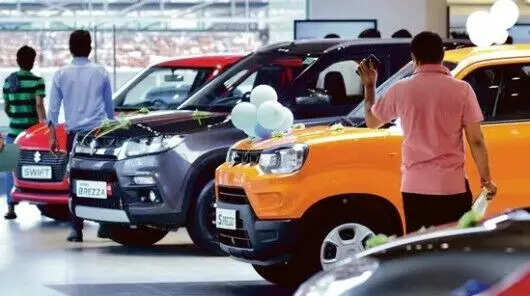This Diwali, Diwali lights will shine not only from the lamps but also from the headlights of new cars. Shiny showrooms in cities, crowds gathering for booking in towns and villages and photos of “delivery day” on social media, all write a new story. The GST reforms implemented on September 22 have completely changed the market, the impact of which is particularly visible in the automotive sector. This means that the country now not only celebrates festivals, but also speeds on four wheels. A new report from Grant Thornton India has revealed that this festive season has seen a surge in car purchases across the country. People buy openly, dealers are crowded, and waiting for the delivery of vehicles has become a “festive ritual”. And behind all this excitement is the government’s GST 2.0 reforms, which have breathed new life into the Indian car market. How…changed circumstances? Just think, a few months ago the circumstances were different. People said, “Don’t buy a car now, it will be beneficial if the tax is reduced.” But once the changes in GST were announced, the market came alive again. A crowd began to gather at the merchant and people began to say, “What are you waiting for?” According to the report, about 41% of consumers plan to buy a new car in the next three to four months. Interestingly, 72% of these people used to postpone their purchases to take advantage of tax benefits. Changing buying behavior This change is not only visible in the sales of vehicles, but also in the purchasing behavior of people. Now people pay attention not only to price or mileage, but also to issues such as technology, safety and fuel efficiency. The survey shows that 38% of buyers are now turning to hybrid cars. 30% people prefer petrol cars, while 21% consumers are interested in electric vehicles. This shows that India is gradually going through a transition where people are looking at hybrid vehicles as a medium option before switching to electric vehicles. The story of the SUV segment is no less interesting. The SUV craze is constantly increasing in India. According to reports, 64% people prefer to buy SUVs, which is why SUV sales accounted for about 65% of the total car market in the last financial year. Indian consumers have become more security conscious than ever before. About 34% of consumers said they prioritize safety features over price or mileage. Experience-oriented customers What is also interesting is that customers are now willing to spend a little more. The report shows that more than 35% consumers do not hesitate to pay more for a better variant. Up to 65% said they were willing to pay 10 to 15% more if they got premium features. This means that the Indian market is becoming “experience-oriented” rather than “value-oriented”. Why people want to buy a car – According to a report by Grant Thornton India, the largest share i.e. 40% buy a new vehicle to upgrade their existing vehicle. This means that most buyers want to replace their old vehicle with a better, more modern and convenient alternative. – 35% people plan to buy a vehicle for personal use or daily travel. This shows that personal convenience and transportation have also become the main reasons for purchasing a vehicle. – 18% people are considering buying an additional vehicle for the family. This means that the demand for vehicles increases due to the increasing needs and conveniences of the family. – A small portion, 5%, buy vehicles for other reasons, while 2% plan to buy vehicles for weddings or wedding ceremonies. Role of Digital Platforms Digital platforms also play an important role in this new era of car buying. According to a survey, 52% of buyers now gather information through both online and offline mediums. Social media and car apps have become a big part of this process. 35% of people get car information through social media, while 23% rely on car apps. The biggest relief from the changed GST structure GST 2.0 has been given to small car buyers. The GST rate on small cars has been reduced from 28% to 18%, which could lead to savings of up to ₹1 lakh on the purchase cost. Its biggest impact is seen in tier-2 and tier-3 cities, where more customers are booking new cars than ever before. Retail sales of passenger vehicles increased by 34% during Navratri. This is not just the effect of new models or festive discounts, but a sign of a return in consumer confidence. Stable interest rates, rising local incomes and incentives for electric vehicles have also strengthened the market. Saket Mehra, automotive expert, Grant Thornton India, said this shift is not just a seasonal trend but indicates a permanent shift in the mindset of Indian consumers. He believes that growing demand for hybrid technology, increasing focus on safety and desire for premium features will shape India’s next era of mobility. Companies need to understand customer behavior. Now the challenge lies before car companies and dealers. They need to understand this changing customer behavior. They should focus on better financing options, attractive variants and digital experiences. This festive season is not only a sales opportunity but also an indication of the future of India’s automobile sector.
Good news in the automotive industry! Customer purchases increased after GST 2.0, 41% people surveyed showed interest in buying
